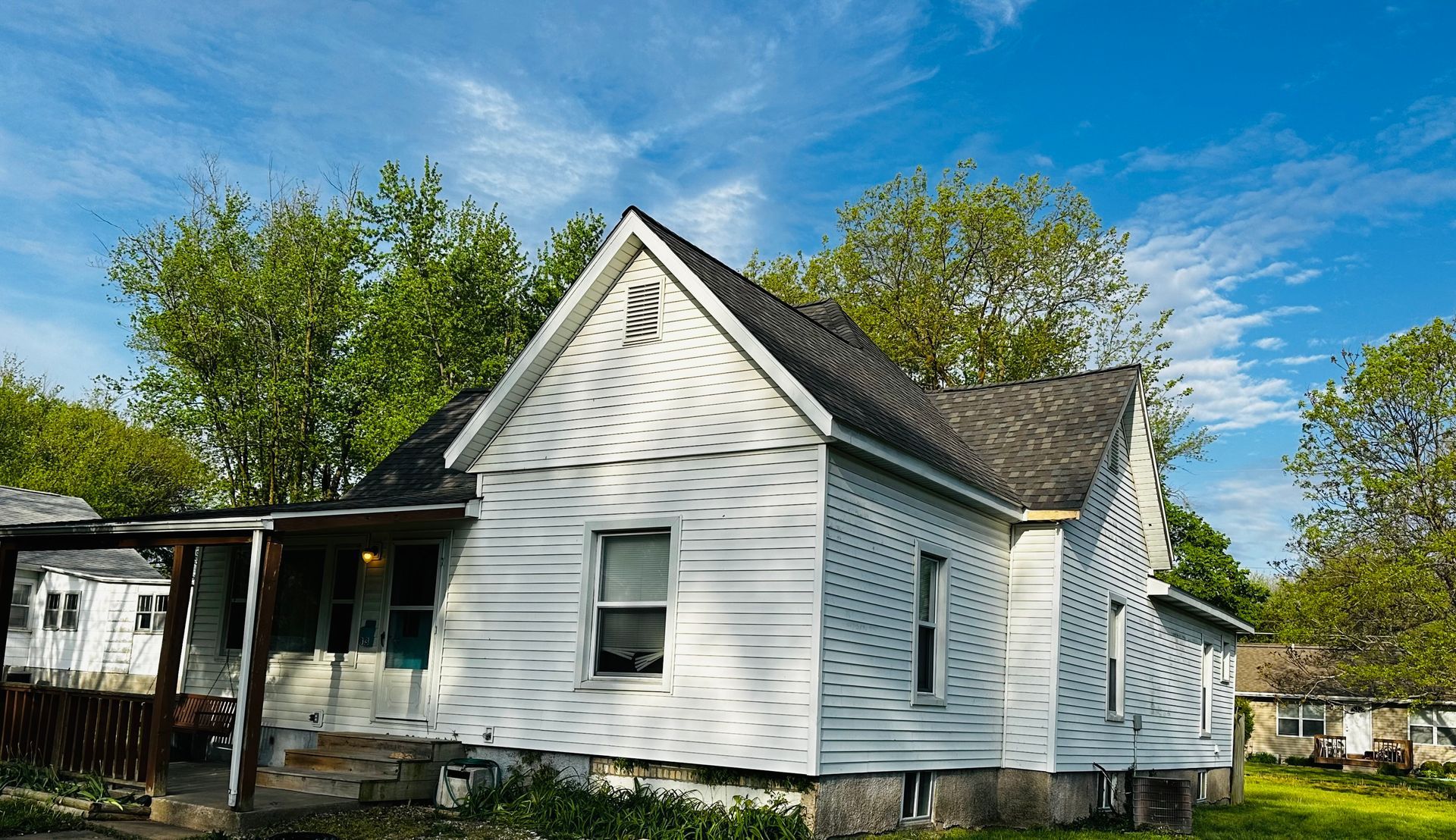How to Tell If Your Roof Needs Replacement Before It’s Too Late

Table of Contents
- Why Acting Early on Roof Replacement Protects Your Home
- Clear Warning Signs That You Can Spot Yourself
- Hidden Signs You Need a New Roof That Aren’t So Obvious
- How Weather and Time Quietly Eat Away at Your Roof
- The Power of a Professional Roof Inspection
- How to Plan a Roof Replacement Without the Stress
- Proactive Care That Extends Your Roof’s Lifespan
- Making a Confident Decision Before Problems Escalate
- What to Do Immediately if You Suspect Roof Trouble
Key Takeaways
- Roof damage can escalate quickly—catching it early saves thousands.
- Even if you don’t see leaks, hidden problems may require a roof replacement.
- A professional roof inspection reveals issues you can’t see from the ground.
- Weather, age, and neglect are the top reasons homeowners need new roofs.
- Acting early gives you control over timing, budget, and materials.
Why Acting Early on Roof Replacement Protects Your Home
When we think about home repairs, the roof usually isn’t top of mind—until something goes wrong. But waiting for an obvious leak or storm damage before taking action is like waiting for your car’s engine to fail before checking the oil. By the time you notice, the repair will likely be far more expensive and disruptive than it needed to be.
Your roof works silently, 24/7, shielding your home from harsh sunlight, pounding rain, wind-driven debris, and heavy snow. Every single day, it takes a beating so you don’t have to. That’s why recognizing early signs you need a new roof is one of the smartest things you can do as a homeowner.
Clear Warning Signs That You Can Spot Yourself
While some roof problems are subtle, others practically wave a red flag. If you notice these issues, it’s time to call a professional for a closer look.
Curling or Buckling Shingles
If the edges of your shingles are curling upward or the surface looks warped, that’s a sign the material has lost its protective properties. This makes it much easier for water to sneak underneath.
Missing or Damaged Shingles
One or two missing shingles might not seem like a big deal—but they create weak points where moisture can seep in and spread.
Excess Granules in the Gutters
When your gutters are full of coarse, sand-like granules, it means your shingles are wearing out. Those granules are what protect your roof from UV damage, and without them, deterioration speeds up.
Visible Sagging
If you see any part of your roof dipping inward, call a professional immediately. Sagging can mean the roof deck is compromised—often due to prolonged water damage.
Hidden Signs You Need a New Roof That Aren’t So Obvious
The worst roof problems often hide in plain sight. You might not see them from the ground, but inside your attic or under your shingles, damage could already be at work.
Leaks or Water Stains in the Attic
Check your attic after a heavy rain. If you notice damp insulation, water stains, or a musty smell, you may have a leak that hasn’t yet made it to your ceilings.
Sunlight Peeking Through
If daylight is streaming through the boards in your attic, that’s a clear pathway for water, pests, and cold air.
Soft or Spongy Roof Decking
When professionals walk on a roof and feel soft spots, it often means the wood underneath is rotting. By the time this happens, roof replacement is usually the safest route.
How Weather and Time Quietly Eat Away at Your Roof
Even the strongest roof can’t last forever. In Missouri, for example, we deal with hot, humid summers, sudden thunderstorms, and icy winters—all of which speed up roof wear and tear.
- Sunlight dries out and cracks shingles.
- Rain and humidity can lead to moss, algae, and rot.
- High winds lift shingles and loosen flashing.
- Snow and ice expand inside cracks during freeze-thaw cycles, making them larger.
If your roof is more than 15–20 years old, regular roof inspections are no longer optional—they’re essential.
The Power of a Professional Roof Inspection
You can only learn so much by looking up from the driveway. A professional roof inspection digs deeper, checking areas that aren’t visible from the ground.
An experienced roofer will look for:
- Damaged flashing around chimneys, skylights, and vents
- Loose or missing shingles
- Signs of rot or mold
- Proper attic ventilation
- Structural stability of the roof deck
A detailed inspection not only tells you if you need repairs or a roof replacement, but also gives you a clear idea of how much longer your roof will realistically last.
How to Plan a Roof Replacement Without the Stress
Once you know your roof has reached the end of its life, the planning phase can feel overwhelming. But breaking it into steps helps.
- Find a Qualified Contractor
Check reviews, verify licenses, and make sure they’re insured. - Choose Materials That Fit Your Budget and Climate
Asphalt shingles are the most common choice, but metal or tile can last longer. - Schedule at the Right Time
Ideally, replace your roof in spring or fall for the best weather conditions. - Prepare for Surprises
Sometimes replacing the roof reveals hidden decking damage, so build a little cushion into your budget.
Proactive Care That Extends Your Roof’s Lifespan
Not ready for a replacement yet? The way you maintain your roof now can add years to its life.
- Clean your gutters at least twice a year.
- Trim overhanging branches to prevent shingle damage.
- Address small repairs as soon as they appear.
- Schedule regular roof inspections so issues don’t go unnoticed.
A little effort now can delay the need for a new roof and save you thousands.
Making a Confident Decision Before Problems Escalate
Waiting for a crisis to force your hand is the most expensive way to handle a failing roof. By taking action when you first see signs you need a new roof, you control the timeline, the budget, and the quality of the work.
Replacing your roof is more than a repair—it’s an investment in your home’s future.
What to Do Immediately if You Suspect Roof Trouble
If your roof is showing signs of damage—whether from age, storms, or hidden leaks—don’t wait. Schedule a professional roof inspection right away.
Visit us or call 573-303-5000. You can also email michael@select-exteriors.com or info@select-exteriors.com to arrange a full inspection and get a clear, honest assessment of your roof’s condition.
Select eXteriors and Roofing is ready to help you protect your home before it’s too late.
Frequently Asked Questions
1. How do we know if it’s time for a roof replacement?
We look for clear signs you need a new roof—like curling shingles, leaks, or sagging. If your roof is over 20 years old, it’s smart to get a professional roof inspection to confirm whether repairs or a full roof replacement is needed.
2. How often should we schedule a roof inspection?
We recommend a roof inspection at least once a year, and after major storms. This helps us spot early signs you need a new roof before they turn into costly repairs or force an urgent roof replacement.
3. Can we wait if our roof only has minor damage?
We don’t advise it. Small problems often lead to big ones. Addressing signs you need a new roof right away can extend your roof’s life and delay a full roof replacement, saving money in the long run.
4. What are the benefits of replacing our roof early?
Early roof replacement protects your home from water damage, improves energy efficiency, and boosts curb appeal. Acting when we see the first signs you need a new roof keeps us in control of the process and budget.
5. How do we choose between repair and roof replacement?
We base it on the extent of damage and age of your roof. A roof inspection helps us decide if fixing it is enough or if the signs you need a new roof mean a full roof replacement is the smarter, longer-lasting choice.



